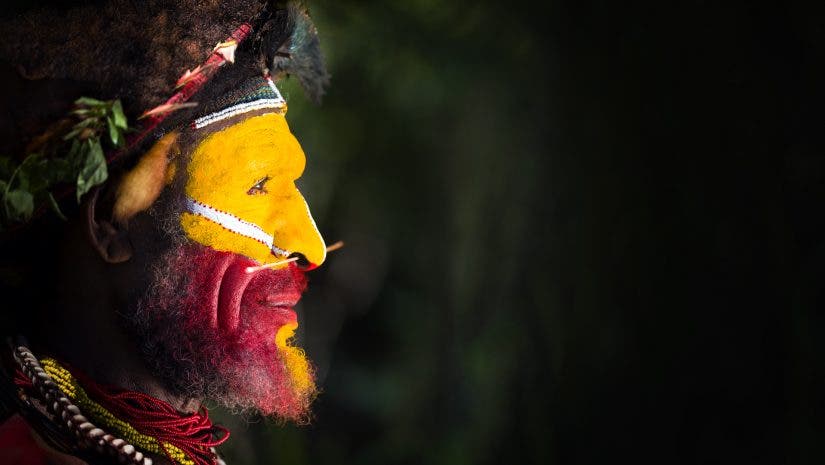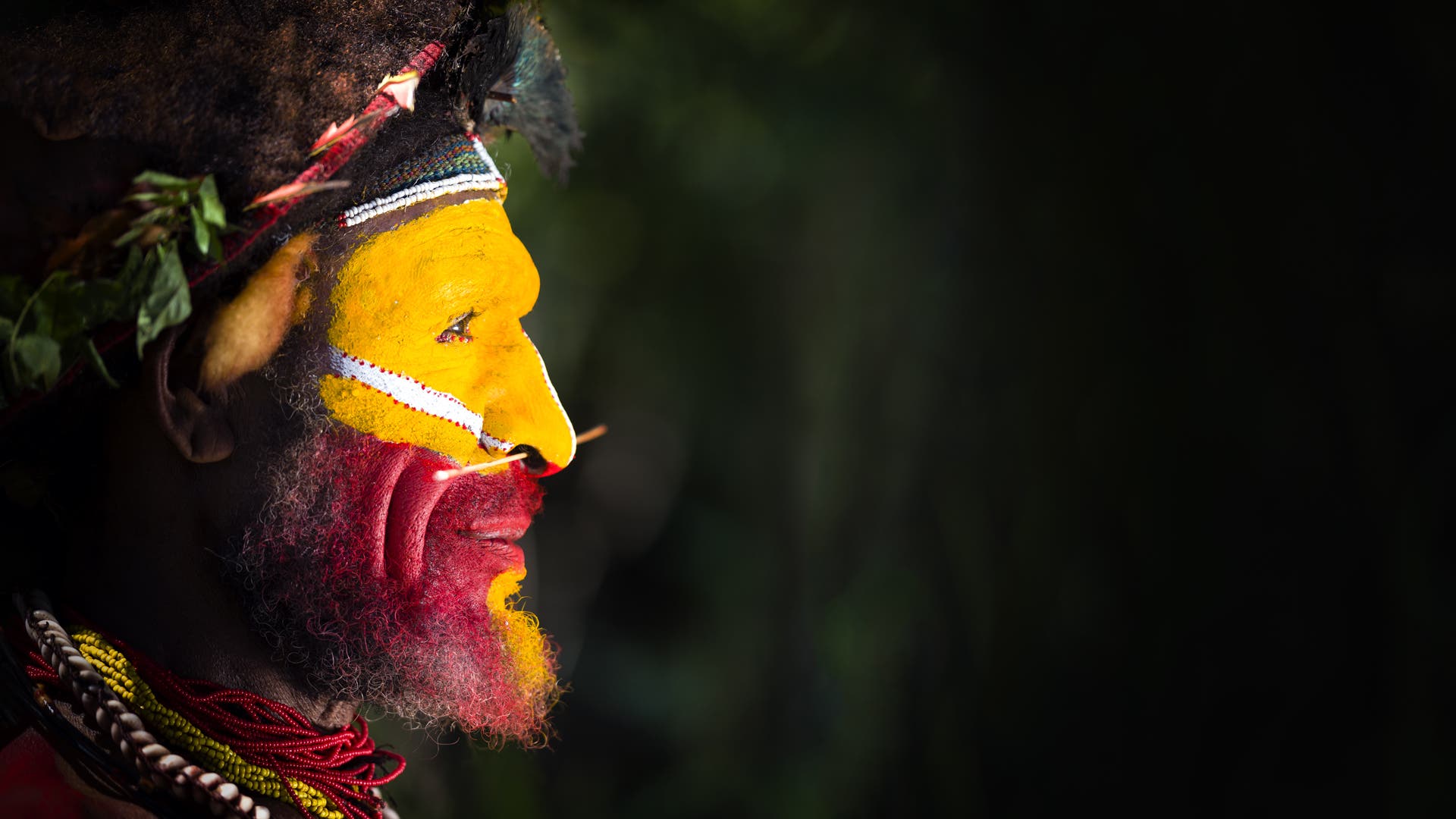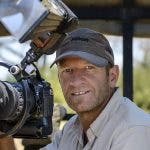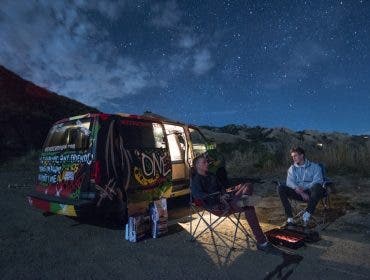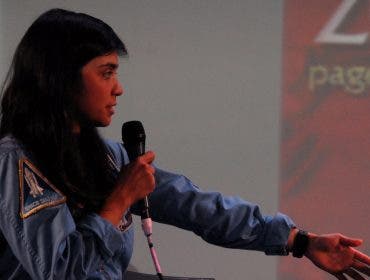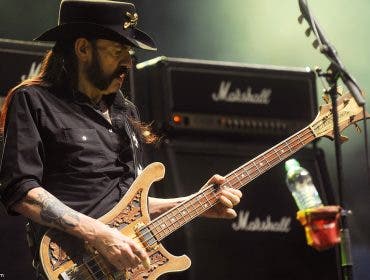My travels have seen me visit many so-called primitive cultures before. However, in reality, it wasn’t unusual to turn up to an ethnic village ready to photograph their traditional ways only to see a brand new 4×4 parked behind the grass huts and mobile phones and other western devices in use…
But this was different – this was Papua New Guinea! And it was here that I was going to witness genuine culture amongst the tribal people of PNG’s remote interior.
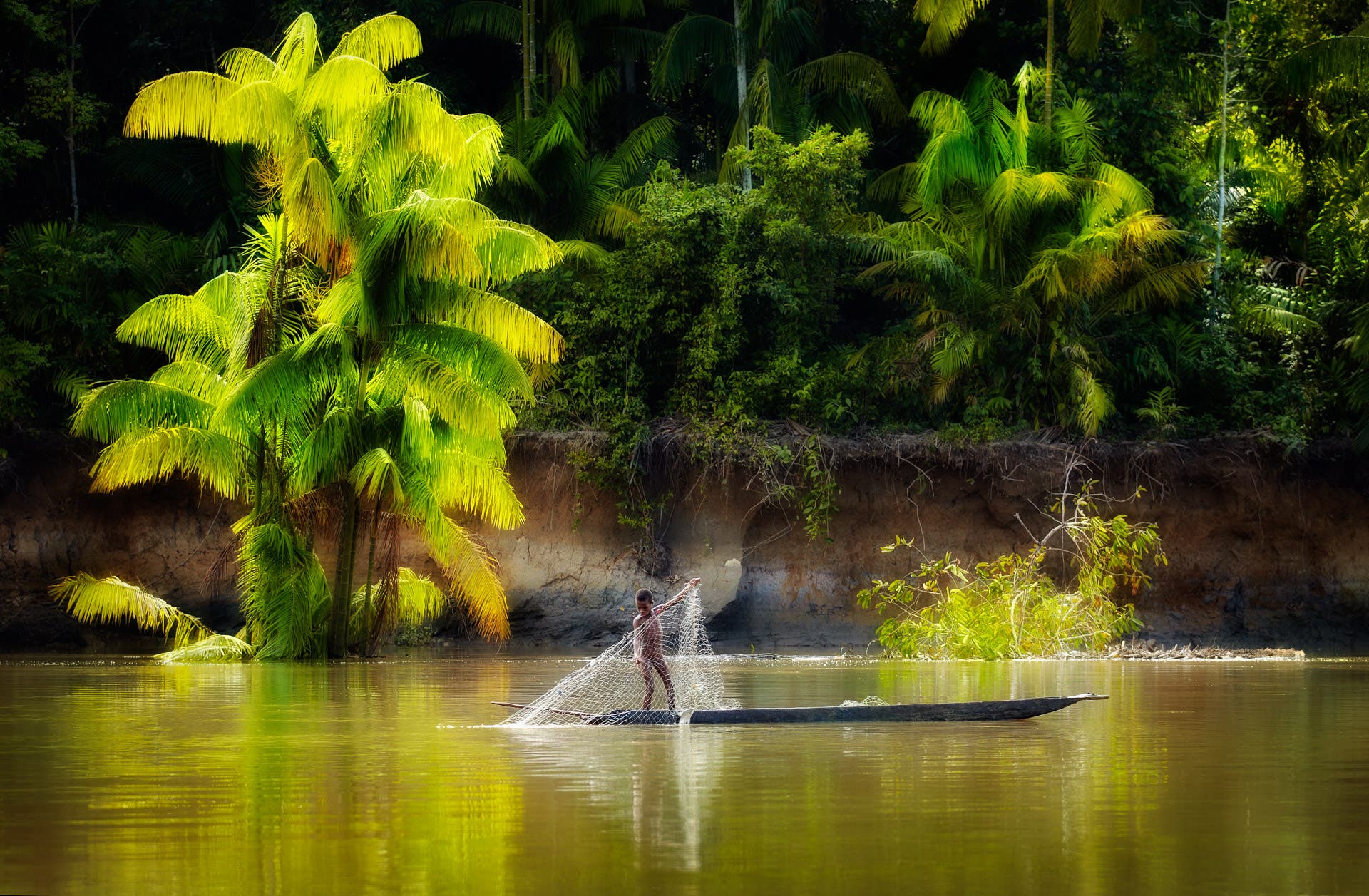
From the crowds waiting behind razor wire fences at the airport to the high security required in Port Moresby there was no mistaking I had arrived into a conflicted nation world. With a population of over 300,000 living in a city trying to balance western industry with traditional culture, Port Moresby is subject to high levels of crime and unemployment, cited as the world’s worst city to live in a 2004 article by The Economist. However, Port Moresby is the gateway to the rest of PNG, and with sensible travel precautions in place I and was looking forward to my cultural adventure inland.
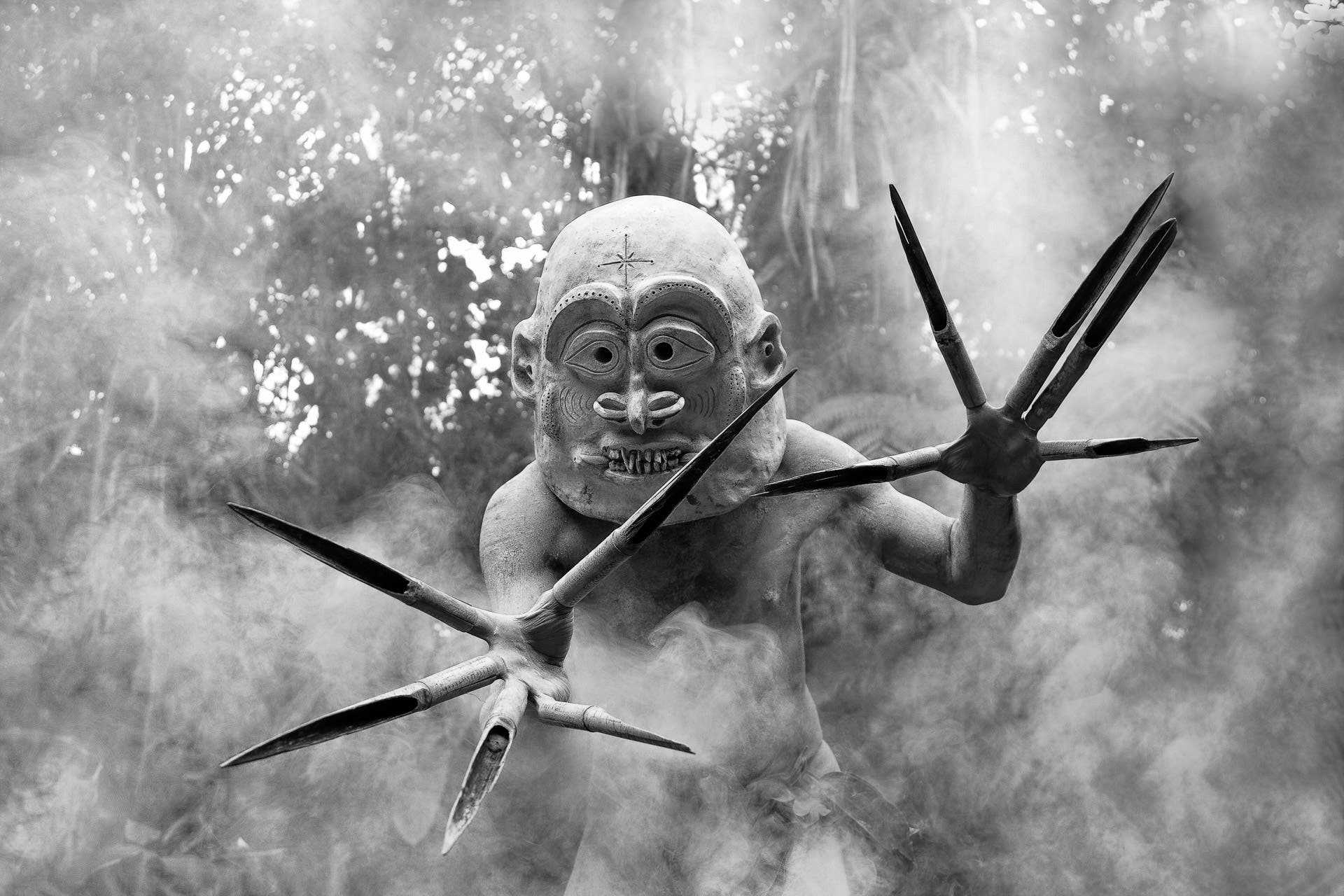
I left Port Moresby on a commercial flight bound for Mount Hagen; flying over heavy jungle and spectacular mountains before touching down amongst the forested peaks, with Mount Hagen itself towering above me at 3834m. I met my guide and we drove out of the township through endless coffee plantations before reaching my first base – the stunning lodge at Rondon Ridge. Sitting at over 2000m above sea level the views across to Mount Hagen and Mount Giluwe (PNG’s second highest peak at 4368m) were endless. From here I commenced my cultural adventure, with a visit to a distant village and home of the Pogla mudmen.
Some time ago the villagers had been driven off their land by a larger, stronger tribe. Not to be outdone they returned by night wearing “spooky” masks made from clay and mud. They came armed with spears and long “fingers” of sharpened bamboo. Creeping eerily through the mist they terrified the invaders causing them to flee and so reclaimed their land. They still celebrate these historical events and seeing these men appear through the smoke accompanied by the piercing “clack clack” of their bamboo fingers will send a chill down your spine.
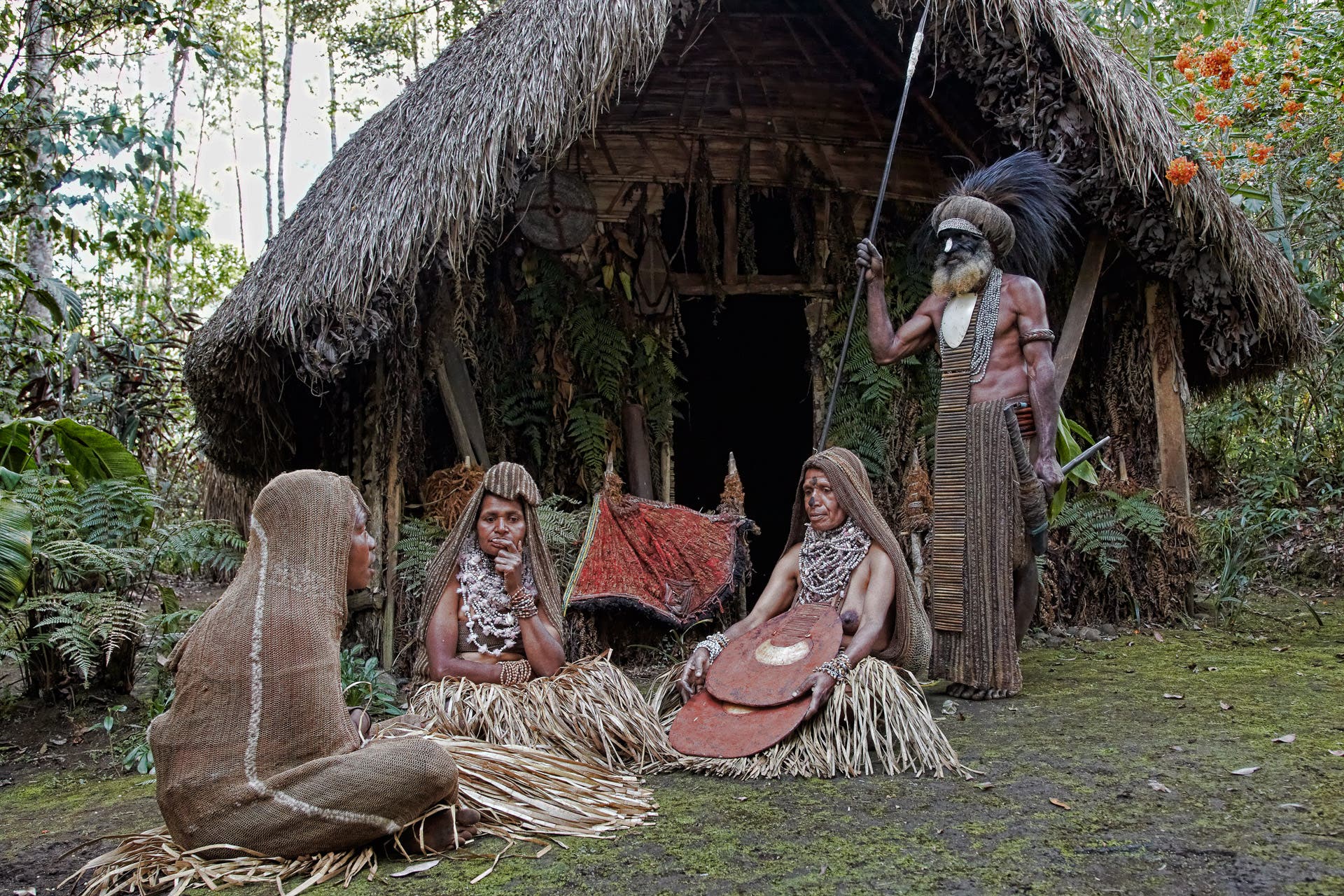
There was less sense of display in nearby Touka village where I met a group of six village elders – all Malpa chiefs wearing little more than a bunch of leaves hung from a few cords of crudely woven string around their waist, known as tanket or arsegras. The chiefs were sitting in a small thatched hut – the walls decorated with a wide array of hanging bones – around a roaring fire discussing important “men’s business”. These meetings are a daily ritual with the chiefs spending great lengths of time sharing secrets and preserving their tribal history through word of mouth.
However, it was in the mountainous, jungle-clad Nebilyer Valley where I journeyed to Paiya Village that I truly started to feel a connection with these incredible tribespeople. Here I was welcomed by the grizzled chief and brought to meet his three wives. He was an older man with a long beard and a huge clump of cassowary feathers in his hair. His belt was made of bamboo and he wore a huge necklace of bones reaching right down to the ground. I was to learn that this necklace was an indication of his status with each bone representing one pig. In this tribe – like many others, wealth is measured by the number of pigs you own. Possessions in order of importance were land, pigs and then wives. It is the job of the first wife to tend the pigs and trade and save for more pigs in order to pay for the second wife. The two wives then save for the third and so on… It was an incredible experience to spend time with this chief, whose name I was barely able to pronounce. Although we had no common language, by using facial gestures and hand signals we were able to laugh and communicate and share our thoughts with each other.
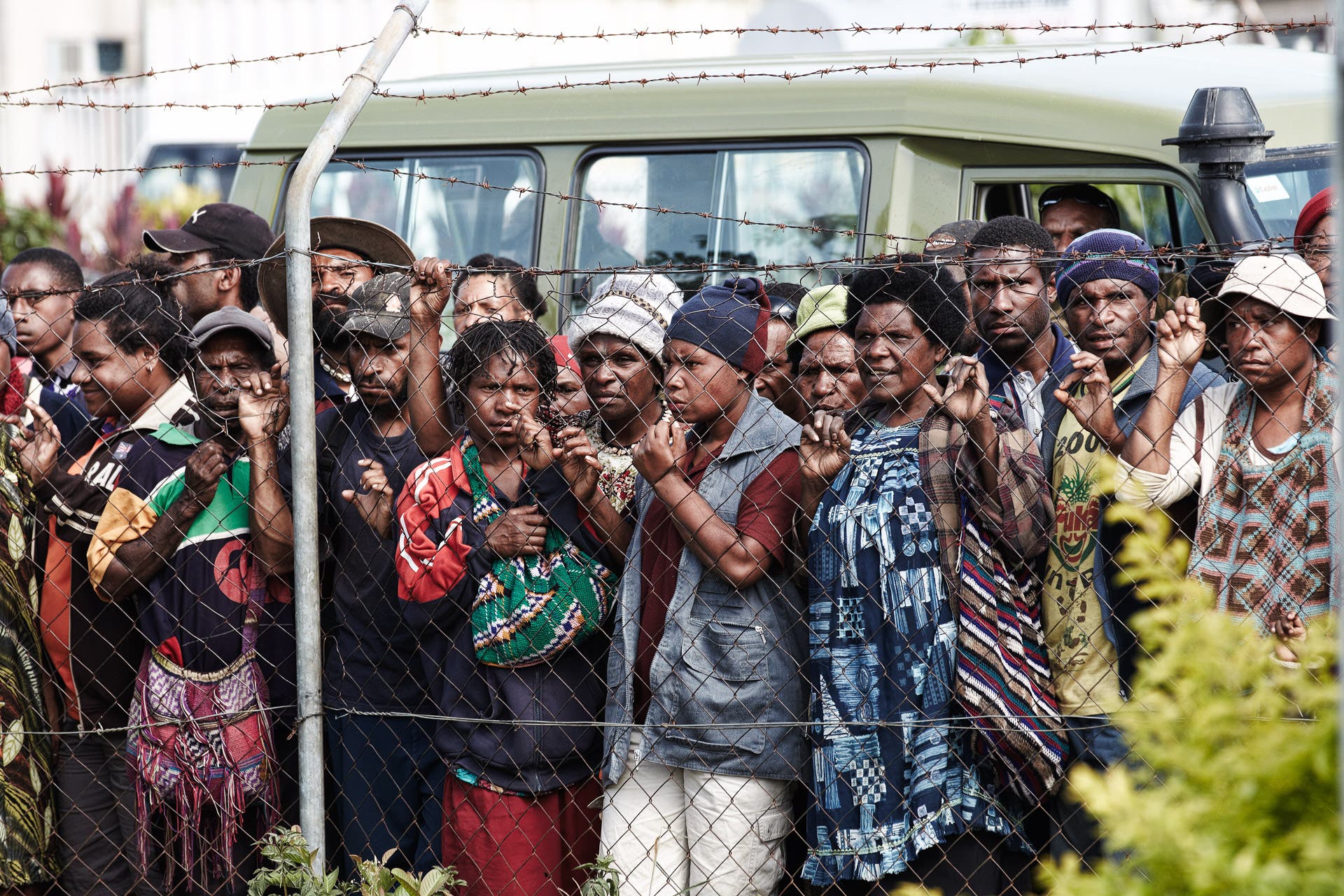
From there it was back to Mount Hagen airport, wading through the crowds from the city, passing through the security fence and on board a charter flight to Karawari. Flying over vast expanses of jungle and mist-shrouded mountains reminded me of Fiordland back home in my native New Zealand. An hour and a half later I touched down on an isolated grass airstrip – I was now in the midst of one of the most remote and unexplored parts of the planet! The altitude here was much lower and the temperature was stifling hot. A further 20 minutes by boat downstream and past an array of stunning villages comprised of thatched huts, dugout canoes and waving locals and I finally arrived at my home for the next two nights – Karawari eco Lodge.
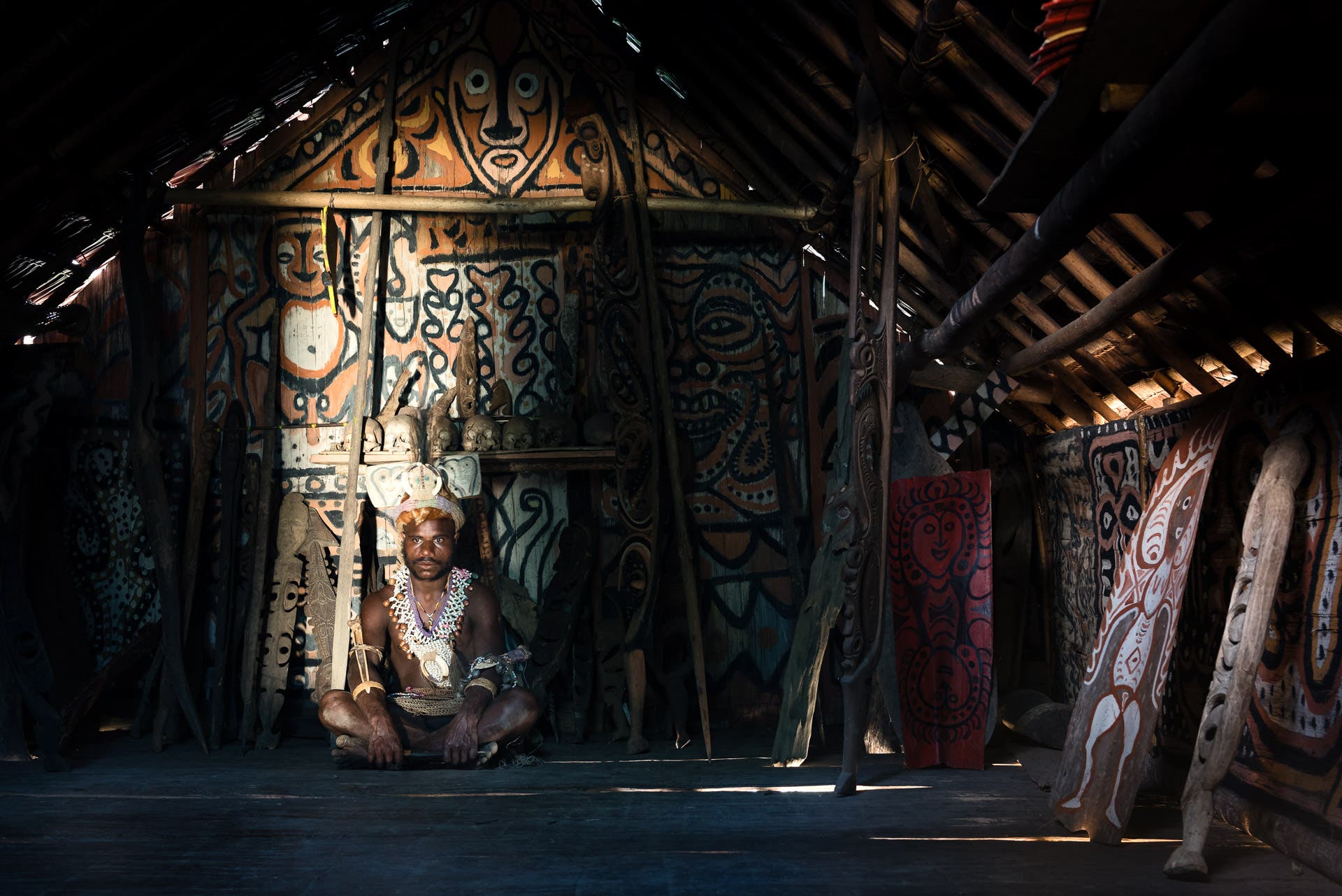
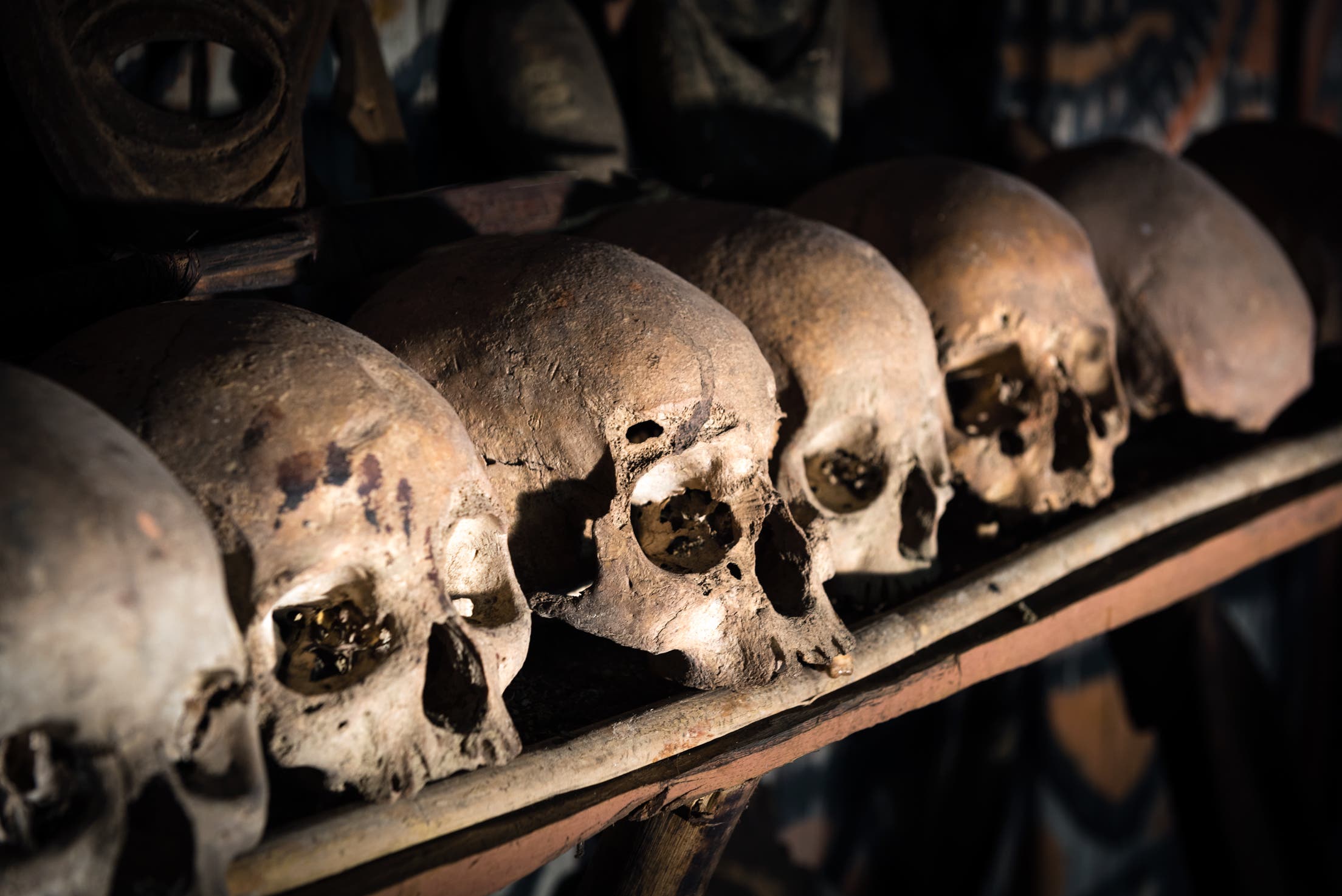
The lodge is amazing, a museum of artefacts and a deck with views that have to be seen to be believed… After a quick talk with my host Augus about what I hoped to see, I was back in the boat and heading to Tangamimbit Village where I was invited into the men’s spirit house, a sacred place normally restricted to the local elders of the village. With an interior that was filled with masks and weapons and a shelf displaying a line of human skulls, the spirit house holds the “trophies” from the not so distant days of cannibalism – a reminder of the turbulent past and warlike ways of these natives.
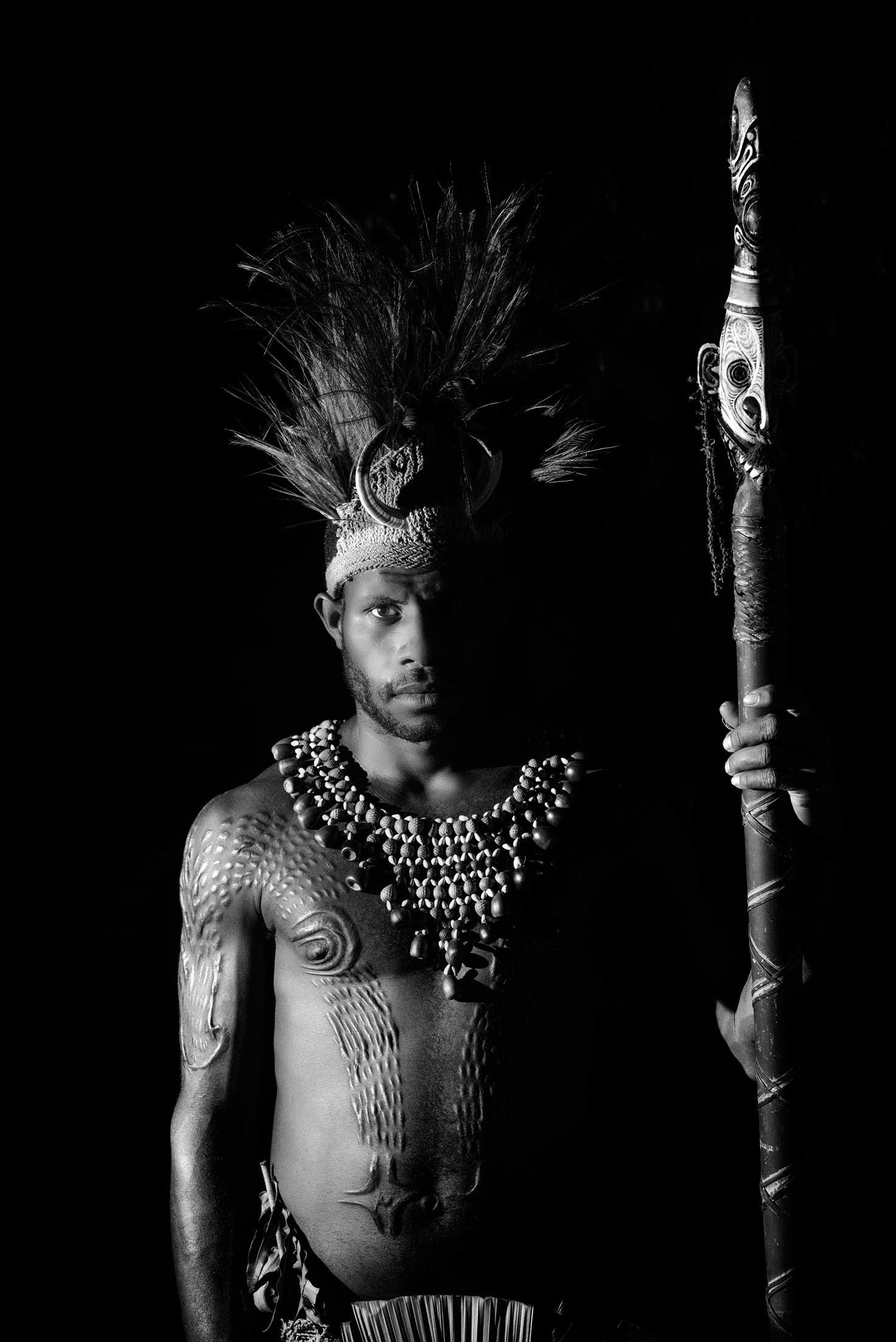
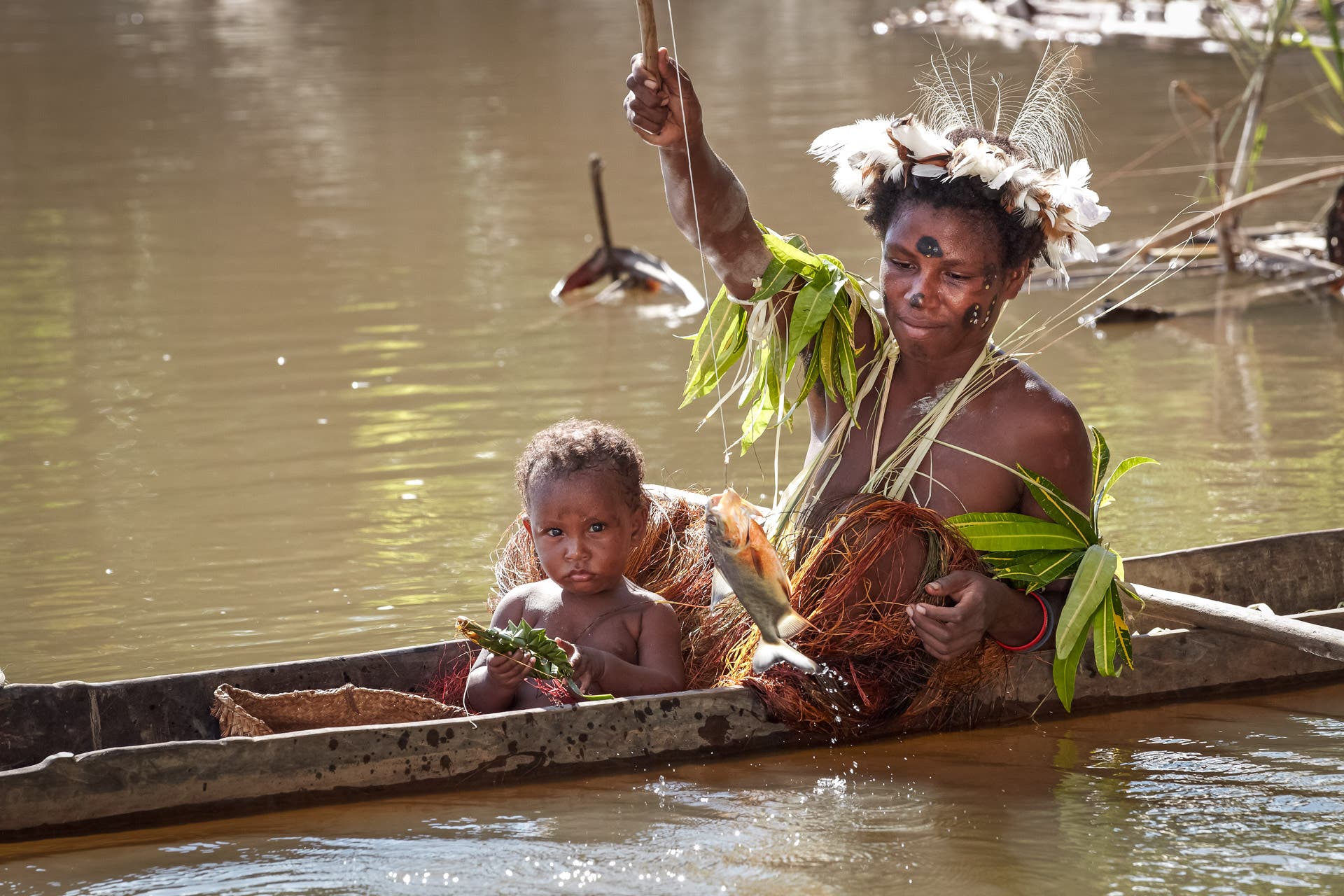
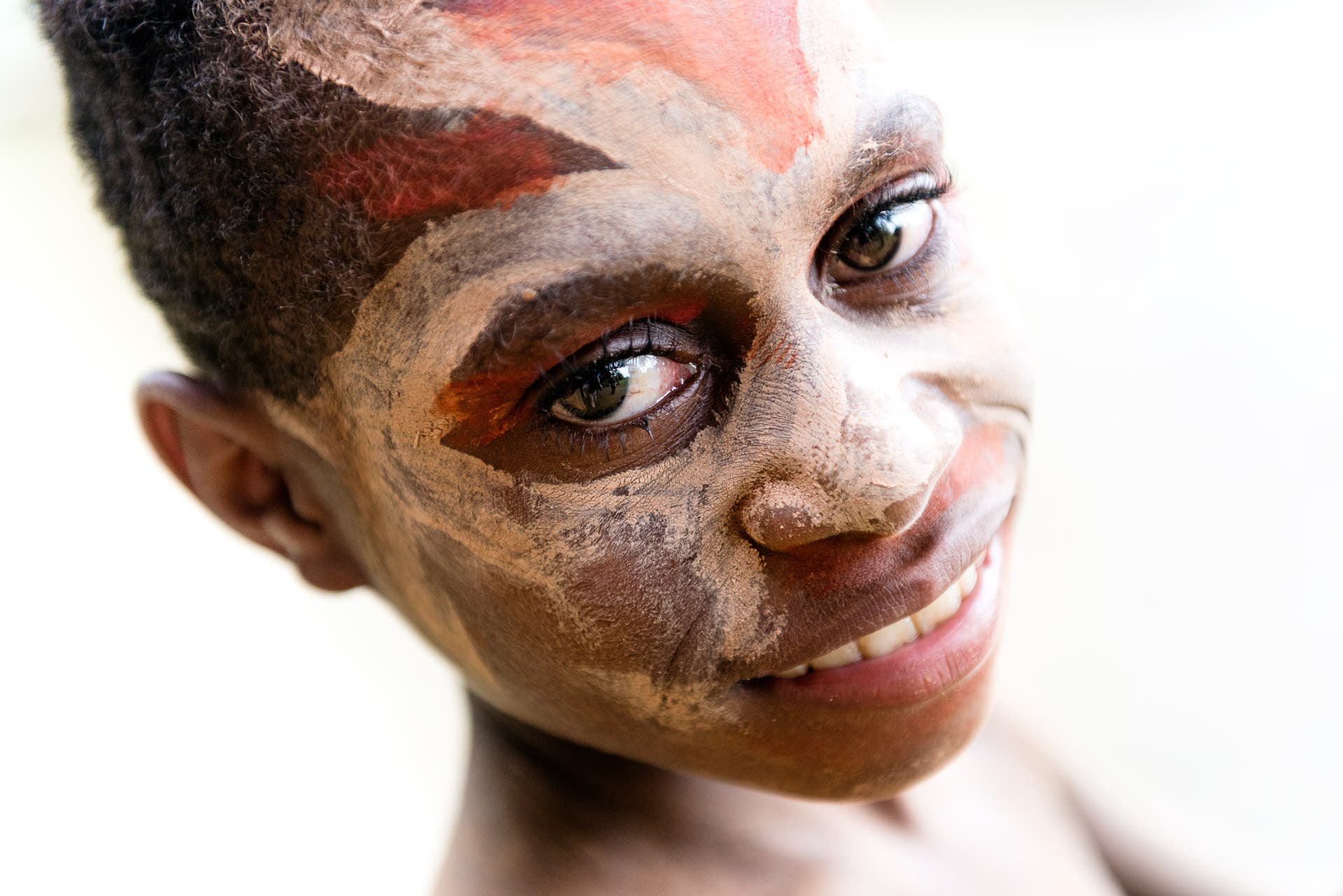
The following few days were spent exploring the river and calling on remote villages along the Karawari and its smaller tributary, the Konmei. This was a real highlight of the trip; there was virtually no sign of the outside world anywhere, everyone was dressed traditionally – or not dressed at all. The children were coated in mud from head to toe – an effective sunblock – and their days were spent fishing, collecting the staple diet of sago, and simply playing. Many of the young children of these villages were timid and would peek from behind trees with curiosity – they had not seen many people with “pale skin’ before – some of the youngest possibly not at all! Though they didn’t take long to ease up and start giggling and laughing as they watched me moving through their villages.
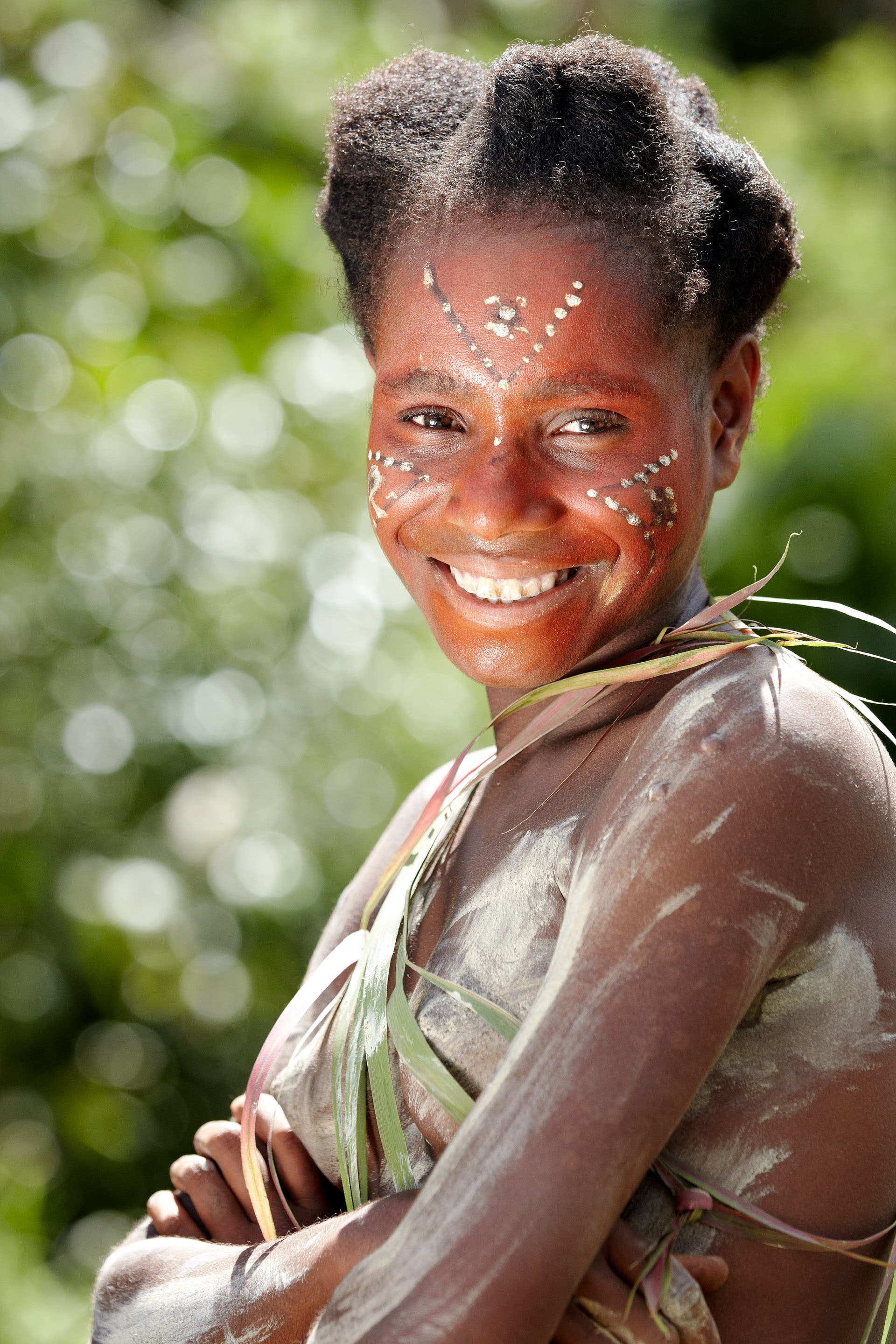
The adults were adorned with the colourful face and body paints that are part of their ancient culture. The pride and identity of the individual tribes remains very intact here, after all, the only way to get in or out is by small charter plane, not something available to the local population. One elderly lady – who I called Dorothy for lack of understanding her local tongue – danced and sang and laughed hysterically as she used hand signals and gestures to teach me how to catch Piranha from her dugout canoe. The ladies and children of the villages – who seemed to do all the work – not only caught the fish from their canoes, but then cooked the catch over a small fire burning in the front of their vessel, often with young children nestled on their lap.
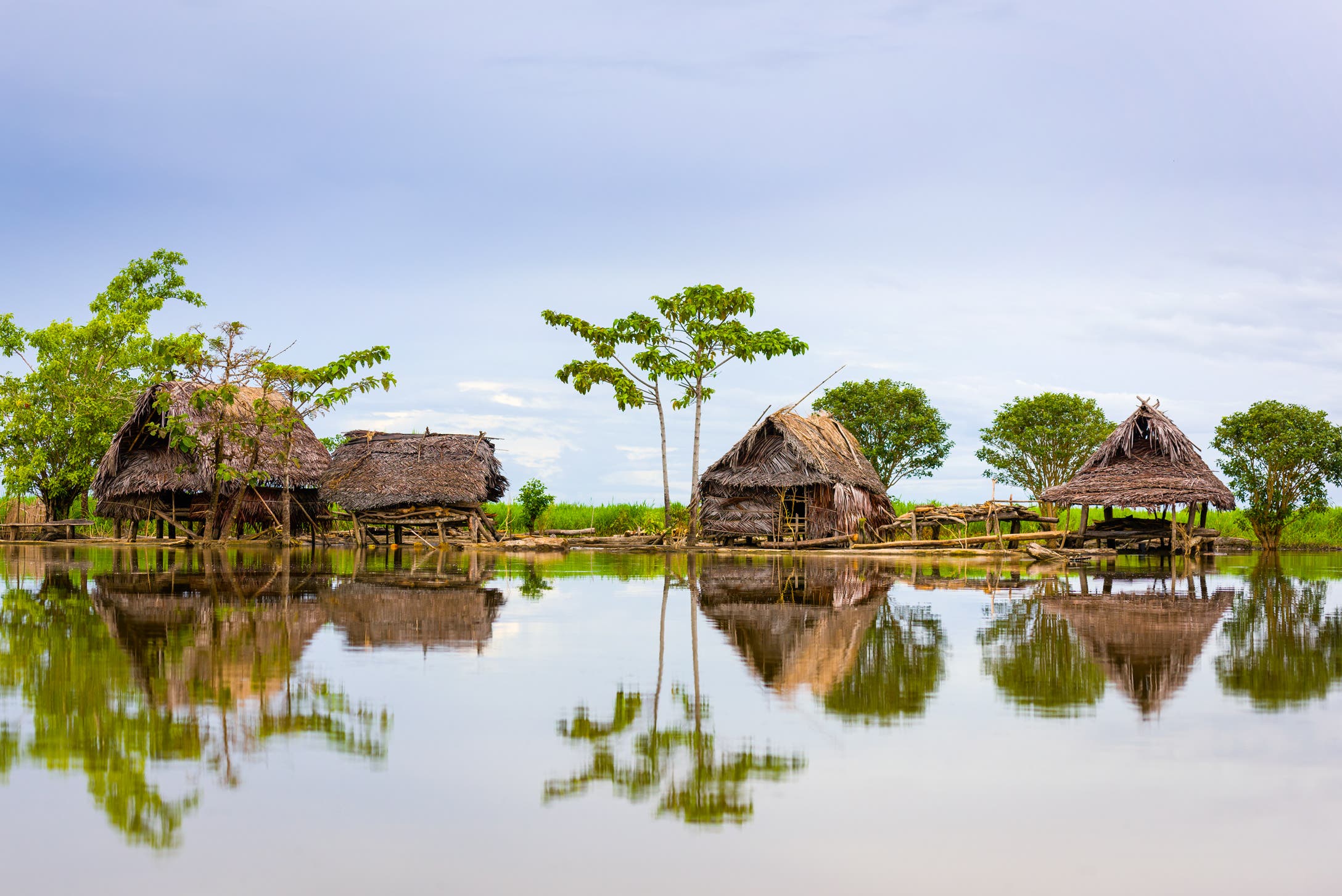
When my time at Karawari came to an end it was with sadness that I headed back to the airstrip to await my small plane onwards. Leaving the low lying rivers and tropical heat behind I flew another two hours to reach Tari in the Southern Highlands. The height and ruggedness of the peaks that the plane journeyed over on this flight were quite unbelievable. There is so much unexplored jungle here, it is little wonder that new species of animals, birds and insects are still being found on a regular basis.
My arrival at Tari was in stark contrast to where I had just come from. This was a commercial airport servicing a mining town with planes and helicopters coming and going. Once again modern enterprise mixed with local culture and it was with amused surprise I noticed the baggage handler was dressed in traditional grass skirt and head wear beneath his hi-vis vest, having to put his bow and arrows down to unload the plane. Tari felt somewhat similar to Port Moresby with the exception that many of the people – even in the city – still wore traditional costume and were carrying traditional weapons. My accommodation was at Ambua Lodge, a group of villas nestled in the forest some distance from Tari and echoing with the calls of the famous Birds of Paradise. It was from here I explored several villages of the famed “Huli Wigmen”, one of the largest ethnic groups in Papua New Guinea.
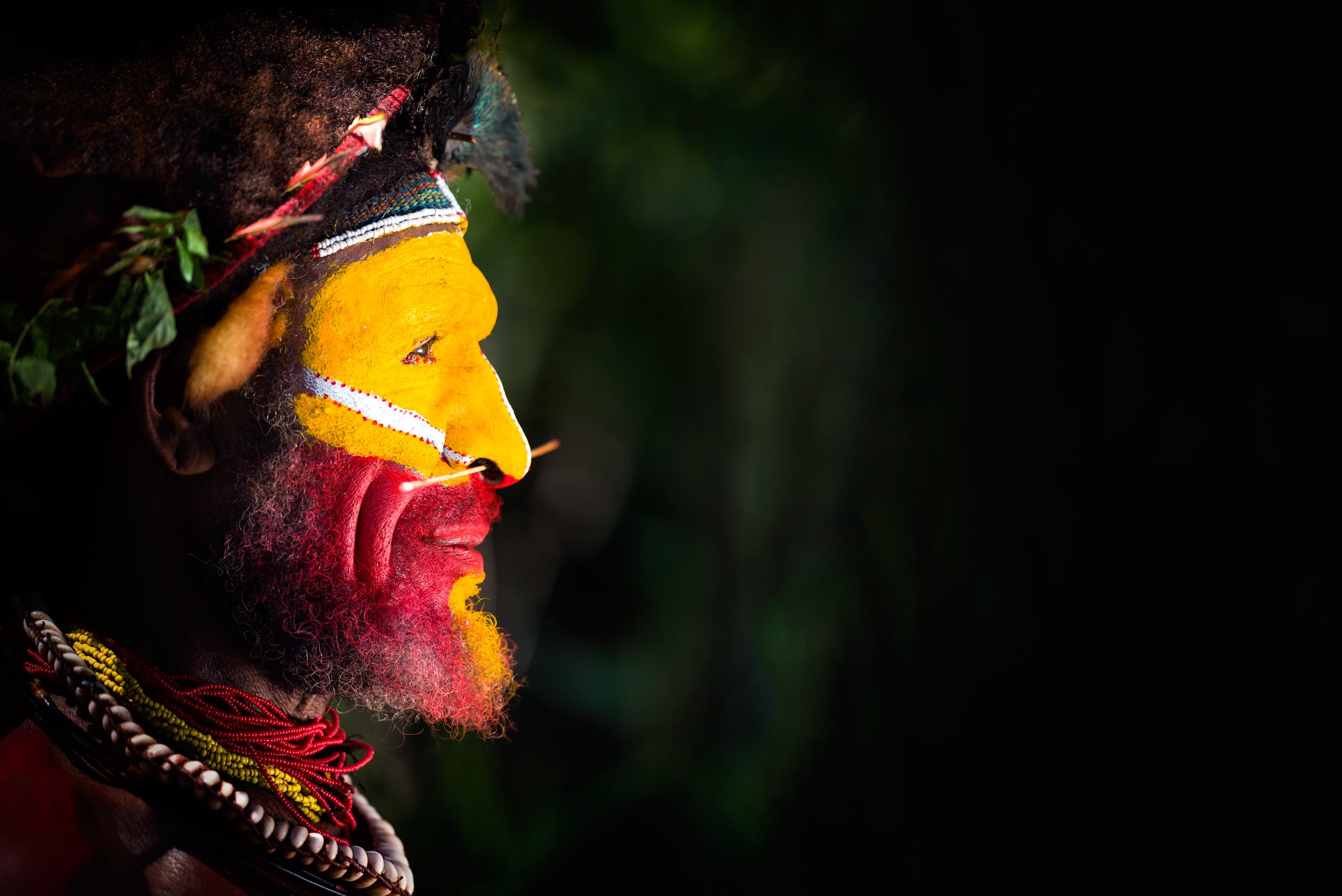
The Wigmen get their name from the very meticulous and intricate head pieces they wear, woven from human hair. Medicine men put spells on chosen men to enable them to grow great crops of hair. This hair is then harvested and woven into wigs – often supplemented by hair from other family members – using a specific design indicative of each tribe. Yellow everlasting daisies are cultivated and used to decorate the wigs, along with feathers and cuscus (possum) fur. The overall look is completed by a band of snakeskin worn across the forehead and a cassowary quill pierced through the nasal septa. In addition, Kina shells are worn around the neck and a decorative belt with bilum cloth is worn to cover the private parts. Face paint is elaborate and done predominantly in bright yellows and reds. Together the results are stunning and make the Huli truly remarkable to see.
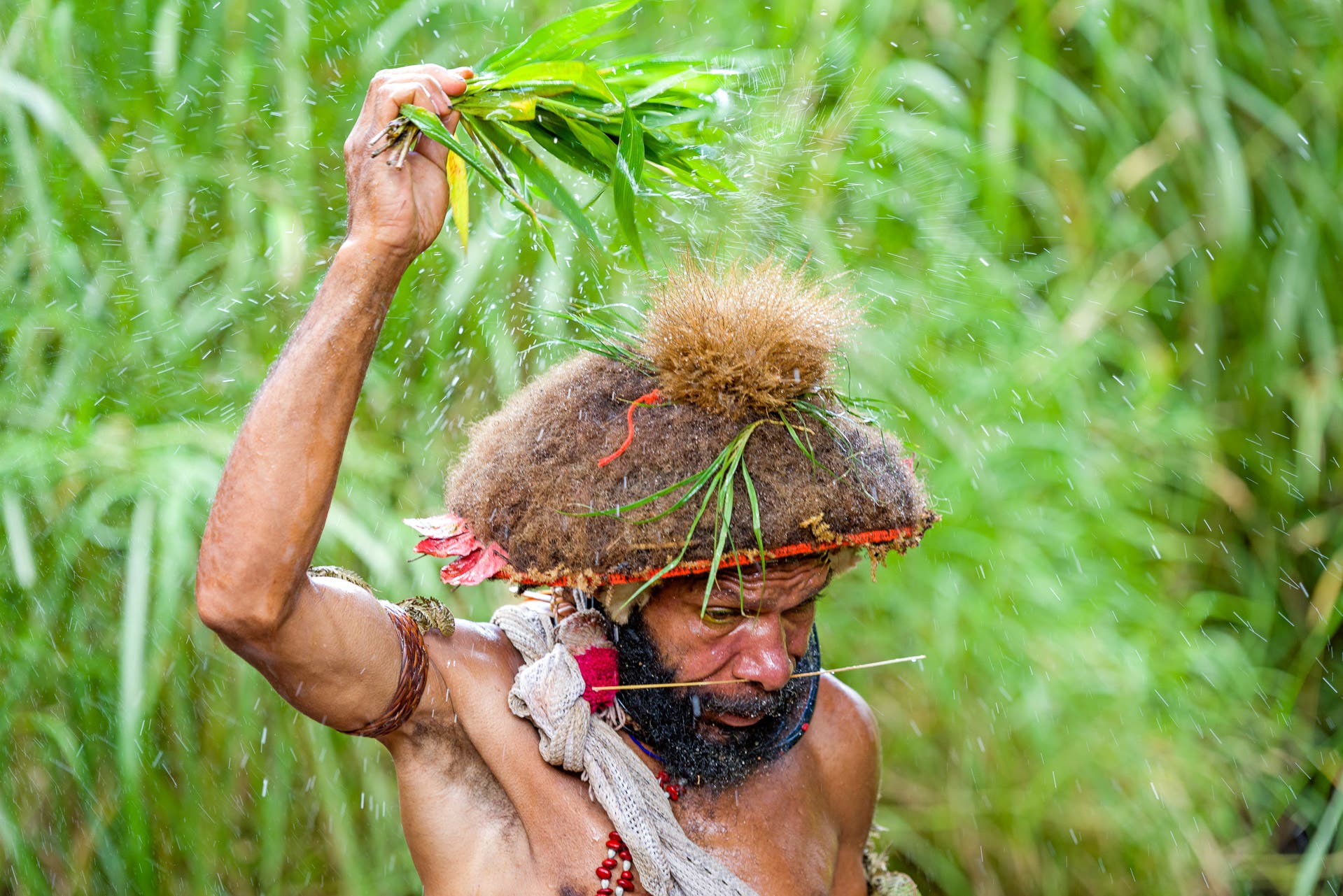
The Southern Highlands region where the Huli Wigmen live over a territory of around 2500 sq kilometres remains unaffected by modern law and sees regular lawlessness and tribal fighting. Land ownership amongst the tribes is a complex affair and disputes over land are often at the root of these conflicts. However, I felt completely safe with my guide and amongst the friendly locals I encountered, who were quick to share their customs with me.
My journey through this fascinating country taught me just how very proud the people of Papua New Guinea are of their cultural heritage, with so many of them staunchly clinging to their traditional ways in the face of modern expansion. From the crocodile scarification of the Sepik region to the fire dancers of the Baining Tribe, this is a land steeped in superstition and ancient rituals where witchcraft and clan wars are still a very real part of everyday life. And yet, once I was amongst the aboriginal people in their remote villages, living the way they have for countless years, it was clear that they are also one of the friendliest and most welcoming people I have ever had the privilege to visit. I was truly sad to say goodbye and head for home.
To see more “Adventures in Photography with Chris McLennan” on the Adorama Learning Center, click here.
